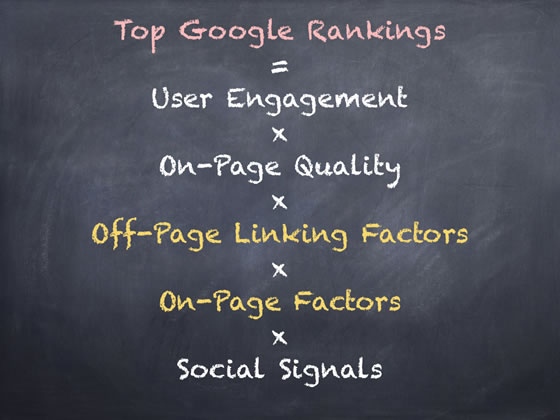How To Rank In Google
April 22, 2014 by admin
Filed under Business, Technology & Computing
Repair your Google Rankings
You need to understand which algorithm, Penguin or Panda has penalized your website if you are going to fix it. The Google Penguin algorithm was launched around the 24th April 2012 so traffic drops near this date indicate that Penguin is responsible.
Whichever keywords dominate your exact match anchor text will usually be the ones hit hardest by Penguin. To see the anchor texts currently linking to your site, use the free tool at majesticseo.com.
Back-Link Construction
The Penguin algorithm requires text link density to be less than 5%. The majority of your linking profile ought to be comprised of Brand links, URL links and junk links.
Your company name or website name are good examples of what to use for Brand links. Use a variety of different styles of your URL for your web address links.
Links that come from various IP addresses are more important than in the past. It is more important than ever that your inbound links come from relevant sites instead of random content sites. A good website trust score for the sites linking to you is vital, as it indicates the caliber of the sites linking to them. Google Penguin likes to see links coming from pages that are linked to themselves, so look for established pages to obtain links from where possible.
Google and Linking Networks
Automated linking networks are never a source of high quality links. Avoid them no matter what.
On-Page Requirements
Along with lowering the off-page keyword density through Penguin, Google has changed it’s rules for on-page keyword density too. Maximum keyword density on-page shouldn’t exceed 2 to 3%. According to leading consultants SEO³, an easy way to aid your search engine rankings is to create a link from your content to an authority site from inside your site content. The best sites to link to are .gov and .edu sites.
Your Web Content
Good quality, well-written and 100% unique content is the only content that you should publish on your site. Linking from keywords within your content to related content on other pages or to external sites is a good SEO practice.
If your site doesn’t render cleanly on all screen sizes then you are not mobile friendly. With Google prioritising their mobile ranking algorithm over and above their traditional web algo in 2017, being mobile device friendly has never been more important, get your site’s compatibility for responsive design checked by CheapResponsiveWebDesign.co.uk and make sure that your site will rank.
Use of Images
Use images where you can to break up any large blocks of your content. A picture absolutely does tell 1000 words, so use them to get your message across. Videos are helpful too and also are very effective to improve the time that your online visitors spend on your pages.
You should use relevant alt text behind each image on your page to describe the specific image. Each image should have bespoke ‘longtail’ alt text.
Your site quality score will be affected if you have spelling errors, grammatical mistakes or bad punctuation. Be sure you use a dictionary with spell checker on all your fresh content before you publish it.
The quantity of content that you write per page should be as much or as little as you have to say on the particular topic, however, there is evidence that pages exceeding 500 words have extra weight in the search results.
If real people like and engage with your content, spending time on your site, then Google will reward you with better rankings. Writing content just to manipulate google is very 2007! Using different words that have the same or similar meanings is a good practice, because Google can associate those keywords using latent semantic indexing (LSI).
This allows you to write more natural sounding content without having to repeat your exact match primary search terms throughout your page.
Meta Description Tags
You need to use bespoke meta data on each individual page of your site. If you have duplicate tags on several pages then your site will be penalized in the search engine results. The page meta description is normally used in SERP’s below your page title. This is an opportunity for you to increase click through rates from the search engines which counts as a way of measuring your sites user engagement.
Content Engagement
The speed that your pages load is a crucial metric for great Google rankings. Check your sites load speed using YSlow in Firefox because if your pages take time to load you won’t rank very high Your site bounce rate measures the percentage of visitors that leaves your website straight away. The lower you can get this number the better, but the maximum figure for top rankings is 55%.
Average Visitor Rate
The amount of pages viewed per visit is another metric that Google uses to establish the quality of your site content. The more pages visited, the better. The length of time visitors spend reading your content is an effective indication of the quality of your content. Improving the average time on site will help your rankings.
Dave Holland is the Managing Director of Deeho Limited, one of the leading search engine optimization companies in the UK. You can connect with Dave here. You can ask seo related questions about your website optimisation.
